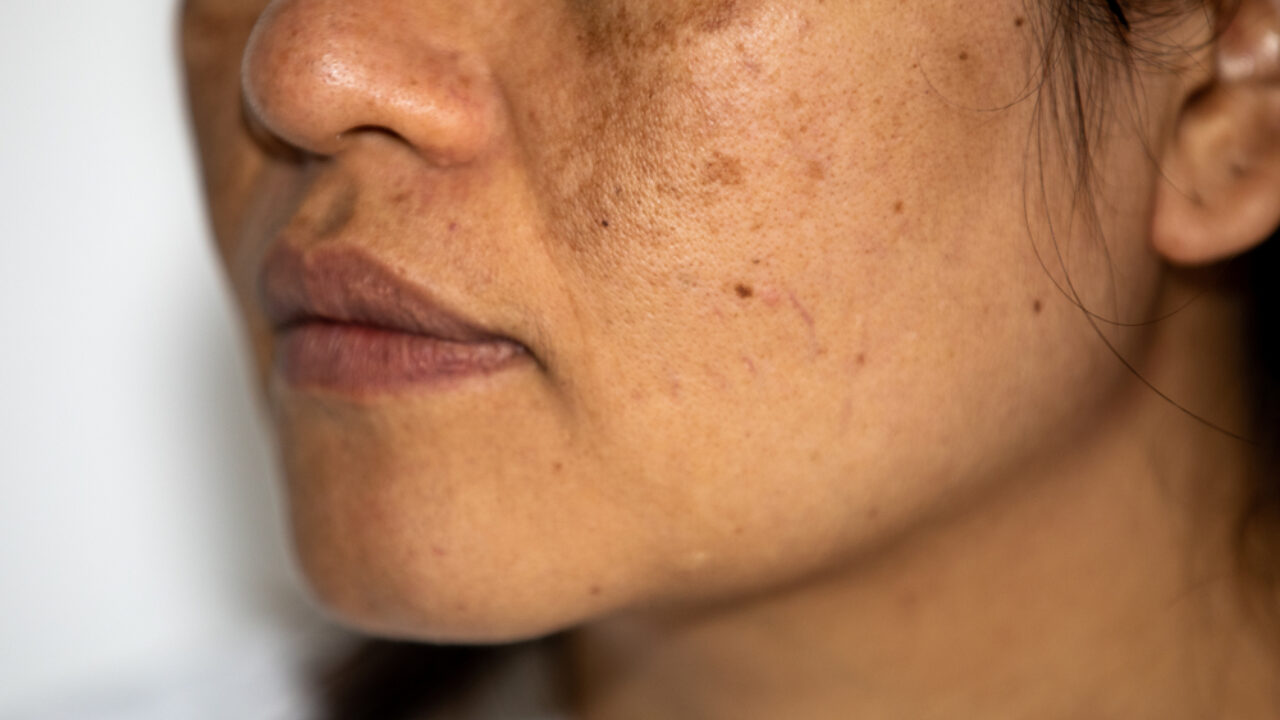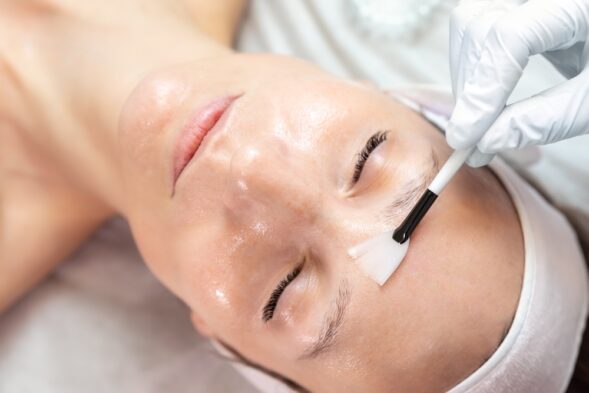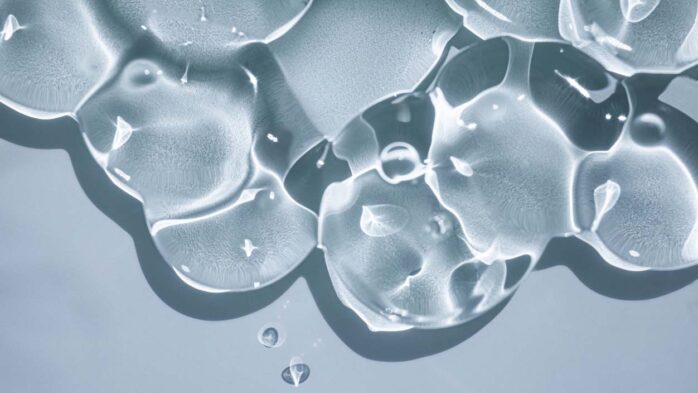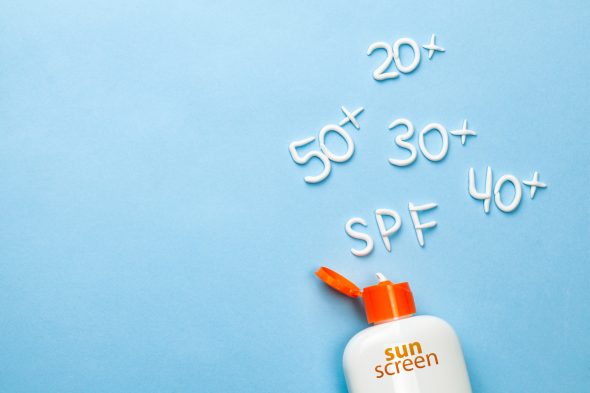
Skin pigmentation and hyperpigmentation can be embarrassing and make you look old before your time. Here’s how to prevent dark spots from appearing and the best pigmentation treatment options and creams
JUMP TO SECTION
Click the links below to jump to the relevant section:
What causes hyperpigmentation?
As you get older, you may start noticing what looks like new freckles appearing on your hands and face. They start off as very pale brown spots and over time, they get darker and more widespread.
These are called dark spots, or age spots, and are caused by what’s known as hyperpigmentation – a condition that is largely a result of too much sun.
To find out what causes hyperpigmentation, the difference between pigmentation and hyperpigmentation, and which hyperpigmentation treatments and creams actually work, we spoke to expert aesthetician and Lumenis practitioner, Dr. Saleena Zimri.
We also round up what we consider to be the best products for hyperpigmentation at the bottom of this page. Click here to jump straight to that section.
Before we get into the causes of skin pigmentation, and the various hyperpigmentation treatment options, we should qualify the difference between pigmentation and hyperpigmentation.
Pigmentation is the natural process by which your skin produces melanin. Melanin is the pigment that gives your skin its colour and is what determines your unique skin tone and variations, as well as being linked to how well you tan (or not).
Hyperpigmentation is a condition in which your skin produces too much melanin, resulting in spots or patches on your skin that look darker than the rest.
While pigmentation is a natural and normal characteristic of the skin, hyperpigmentation is an abnormal condition where there is an overproduction or uneven distribution of melanin. Hyperpigmentation can occur in specific areas of the skin, such as the face, hands, and arms.
It’s most commonly caused by sun exposure, as Dr. Zimri explains: “Essentially, excess sun exposure triggers an overproduction of melanin. Your skin produces melanin to help protect you from the sun’s rays, but if you’re exposing your skin to the sun excessively, the process is disrupted, and your skin produces an excess of melanin, which leads to hyperpigmentation.”
WANT TO KNOW MORE?
 Getty Images/iStockphoto
Getty Images/iStockphoto There are a number of causes of hyperpigmentation, including:
There are a couple of ways to get rid of hyperpigmentation. Laser treatments are the fastest and most effective, but they’re also expensive. Chemical peels can be effective at getting rid of skin pigmentation, as can hyperpigmentation creams and serums. However, it can take a lot longer for the benefits of these latter hyperpigmentation treatments to appear.
For individuals with pre-existing hyperpigmentation, Dr. Saleena Zimri suggests a hyperpigmentation treatment using the Stellar M22 IPL laser because it’s non-invasive and doesn’t use needles. Instead, it uses so-called IPL lasers known for their effectiveness in targeting pigmentation.
We explain more about IPL in our guide to hair removal, but in summary, IPL stands for “intense pulsed light.” It uses light to penetrate the pigment in the skin, or hair. This light turns to heat which then kills the cells containing the excess melanin.
The Stellar M22 IPL laser, in particular, uses something called Optimal Pulse Technology, which delivers high-power pulses to help the skin rejuvenate. “It also incorporates Multiple-Sequential Pulse Technology,” Dr. Zimri adds, “to cool the skin between pulses, ensuring a comfortable experience for patients.”
 Shutterstock
Shutterstock A chemical peel uses a chemical solution to remove the top layer of the skin. It can help to lighten dark spots and patches, as well as improve the overall appearance of your complexion.
There are different types of chemical peels, and the strength of the peel depends on the severity of your hyperpigmentation. For example, a light chemical peel may be used to treat mild hyperpigmentation, while a deep chemical peel may be used to treat more severe hyperpigmentation.
Chemical peels work by breaking down the bonds that hold the top layer of skin together. This allows the dead skin cells to be shed, revealing the new, lighter skin underneath.
They’re effective in treating hyperpigmentation, but they are not a permanent solution. The results of a chemical peel typically last for several months, but the hyperpigmentation may return if you don’t take steps to prevent it.
Conversely, they can make your skin more sensitive to the sun so you need to be careful with sun exposure after the peel. Especially as it’s healing. Peels can cause redness, peeling, and scabbing too, so if you have sensitive skin, speak to an expert before opting for a chemical peel.
Microneedling is another hyperpigmentation treatment. It uses tiny needles to create tiny holes in the skin. This can help to stimulate the production of new collagen and elastin, which can help to improve the appearance of hyperpigmentation, as well as tackle other signs of ageing.
Collagen and elastin are the proteins that give skin strength and elasticity. When these proteins are produced at higher levels, the skin can appear smoother, firmer, and more youthful.
Microneedling can also help to improve the appearance of hyperpigmentation by breaking up the pigment that causes the dark spots. The holes created by microneedling allow the topical creams that are used to treat hyperpigmentation to penetrate the skin more deeply, which can make them more effective.
 Getty Images/iStockphoto
Getty Images/iStockphoto There are a number of topical creams that can help to lighten dark spots and patches and get rid of hyperpigmentation. These creams typically contain ingredients such as hydroquinone, azelaic acid, or retinoids.
 Shutterstock
Shutterstock It is important to note that all of the hyperpigmentation treatments we list above are not permanent solutions. The results of each treatment typically last for several months, but the hyperpigmentation may return if you do not take steps to prevent it.
The best way to do that, particularly if the hyperpigmentation is caused by sun exposure is:
In addition to sunscreen, Dr. Zimri recommends wearing protective clothing such as sunglasses and sunhats for added defense against UV rays. She also highlights that post-sun hyperpigmentation can occur throughout the year, even during colder months. “You should be taking preventative measures, such as applying sunscreen, all year round,” Dr. Zimri recommends.
These recommendations have been taken from our best dark spot correctors list.

Victoria is founder and editor-in-chief of mamabella, freelance journalist and Mum. She has a passion for empowering people to feel beautiful whatever their age, size, skin type and budget
